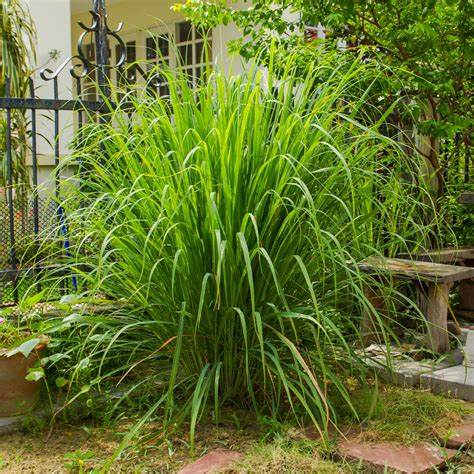
Lemongrass
Cymbopogon citratus
Basic Information
🌿 Family: Poaceae🗺️ Zone: 9-12
Other Names:
- Citronella Grass
- Fever Grass
🌡️ Ideal Temperature : 65°F – 95°F
🔥 Heat Tolerance: Up to 100°F
❄️ Cold Tolerance: Down to 40°F
🌱 Type: Perennial
Layers
- Herbaceous
Functions
- Edible
- Medicinal
- Wildlife Attractor
- Dynamic Accumulator
- Erosion Control
- Animal Fodder
- Border Plant
- Pest Management
- Water Purifier
Pests
Description
Lemongrass (Cymbopogon citratus) is a tall, clumping grass that can grow up to 1.2–1.8 meters (4–6 feet) tall. It has long, narrow, green leaves with a strong lemony scent due to its high citral content. It is commonly used in cooking, herbal medicine, and essential oil production.
The plant thrives in tropical and subtropical climates, requiring warm temperatures and moist but well-drained soil. It is a fast-growing grass that can be used as a natural pest repellent and soil stabilizer in permaculture systems.
🌞💧 Sun and Water Requirements:
- Requires full sun for optimal growth.
- Prefers well-drained, loamy or sandy soil with regular watering.
- Drought-tolerant once established but benefits from occasional deep watering.
✂️🫘 Methods to Propagate:
- Seeds: Not commonly used, as germination is slow and unreliable.
- Division: The most effective method; divide clumps and replant in early spring.
- Cuttings: Root stems in water or moist soil for propagation.
🧑🌾👩🌾 When to Harvest:
- Harvest stalks when they reach about 30 cm (12 inches) in height for best flavor.
- Cut stalks at the base, leaving the plant to continue growing.
- Leaves can also be harvested and dried for teas and herbal remedies.
Purpose
Lemongrass serves multiple functions in a permaculture system:
- Edible: Used in culinary dishes, teas, and essential oils.
- Medicinal: Contains antimicrobial and anti-inflammatory properties.
- Wildlife Attractor: Flowers provide habitat for beneficial insects.
- Dynamic Accumulator: Helps improve soil quality and prevent erosion.
- Erosion Control: Its dense root system stabilizes the soil.
- Animal Fodder: Can be used as supplemental feed for livestock.
- Border Plant: Acts as a natural windbreak and boundary marker.
- Pest Management: Repels mosquitoes, aphids, and other insect pests.
- Water Purifier: Absorbs contaminants in the soil and purifies water.